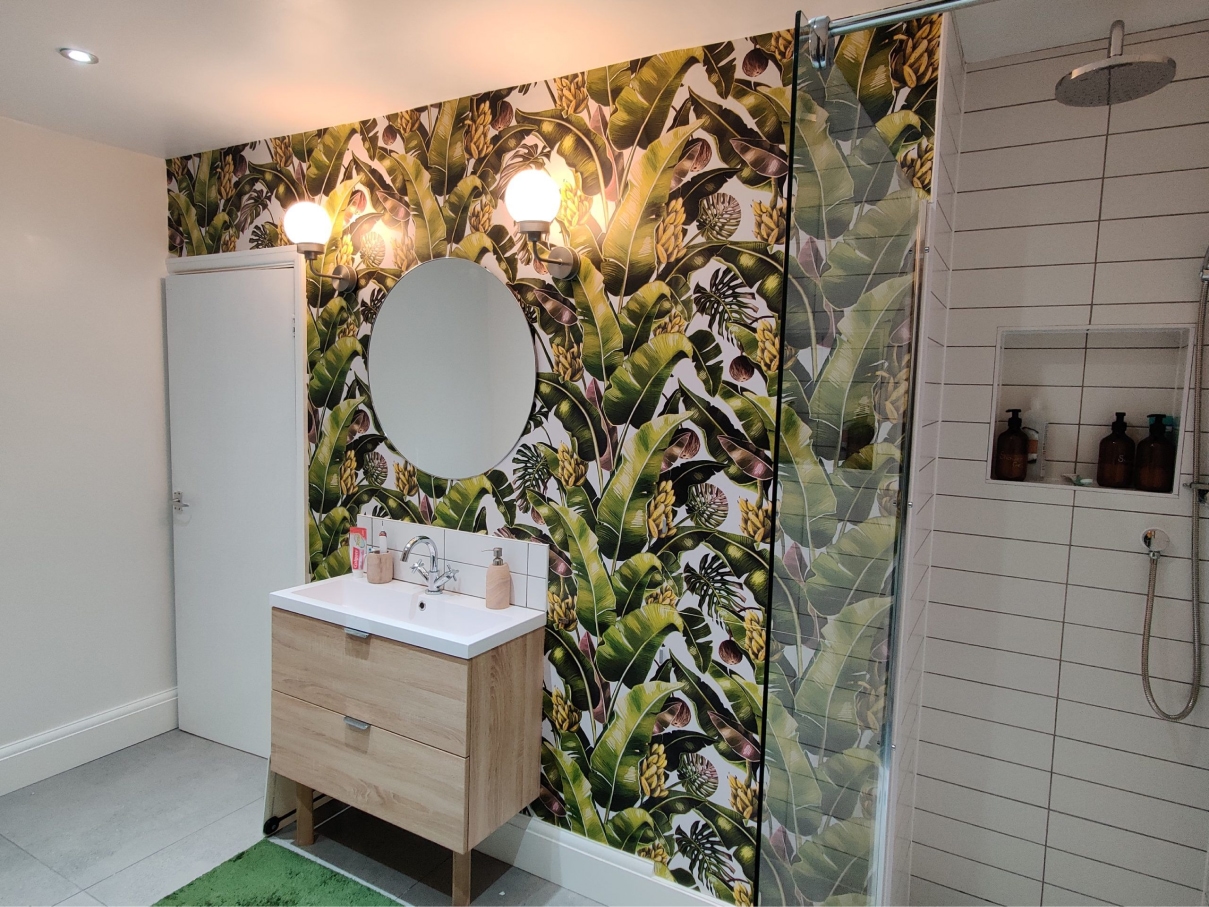photo above courtesy of Rebecca from @StudioPlumb using Autumn Path Wallpaper
After installation, it’s essential to let your wallpaper and paste dry completely before applying any protective coatings. This process typically takes between 24 to 48 hours. During this time, it’s advisable to avoid using the kitchen or bathroom to prevent any damage to the wallpaper before it’s protected.
Once your wallpaper is thoroughly dry, the next step is to apply a decorators varnish. This type of varnish, like that used for wood surfaces, is specially formulated for various materials, including wallpaper. A varnish will safeguard against water damage, stains, and even mould.

We spoke with Andrew Dillon, a professional painter and decorator with over thirty years of experience based in Oxford, UK. He shared insights from a recent project involving the Kingdom Palm Wallpaper, which he installed in a client’s bathroom. To avoid discolouration, he used a fine brush to apply three coats of dead flat matte varnish, creating an invisible protective seal. Decorators varnishes come in various finishes, including high gloss, satin, or dead flat, depending on your preference. The Polyvine Deadflat Varnish, for instance, is nearly invisible, allowing the wallpaper’s design to shine through.
For optimal results, a representative from Polyvine on YouTube recommends applying one coat of satin followed by two coats of dead flat varnish. The satin finish offers enhanced protection, while the additional layers of dead flat maintain a subtle appearance.

Non-Woven Wallpaper and Waterproofing Considerations
Non-woven wallpaper is popular for its breathability, making it suitable for humid areas. However, this same breathability can render it vulnerable to water damage. Standing water can permeate the wallpaper, weakening the adhesive and causing the wallpaper to lift over time. Thus, waterproofing your wallpaper will reduce its breathability and make it more challenging to remove later. If you choose to waterproof, ensure you use a mould-resistant paste and be prepared for a more complex removal process.
Waterproofing your wallpaper is a straightforward process. If your bathroom, like most, doesn’t have wallpaper that comes into direct contact with water and has good ventilation, you shouldn’t encounter significant issues. However, if you’d prefer added peace of mind, applying a few layers of decorators varnish is highly recommended. This will help you enjoy the beauty of your wallpaper for years to come.

